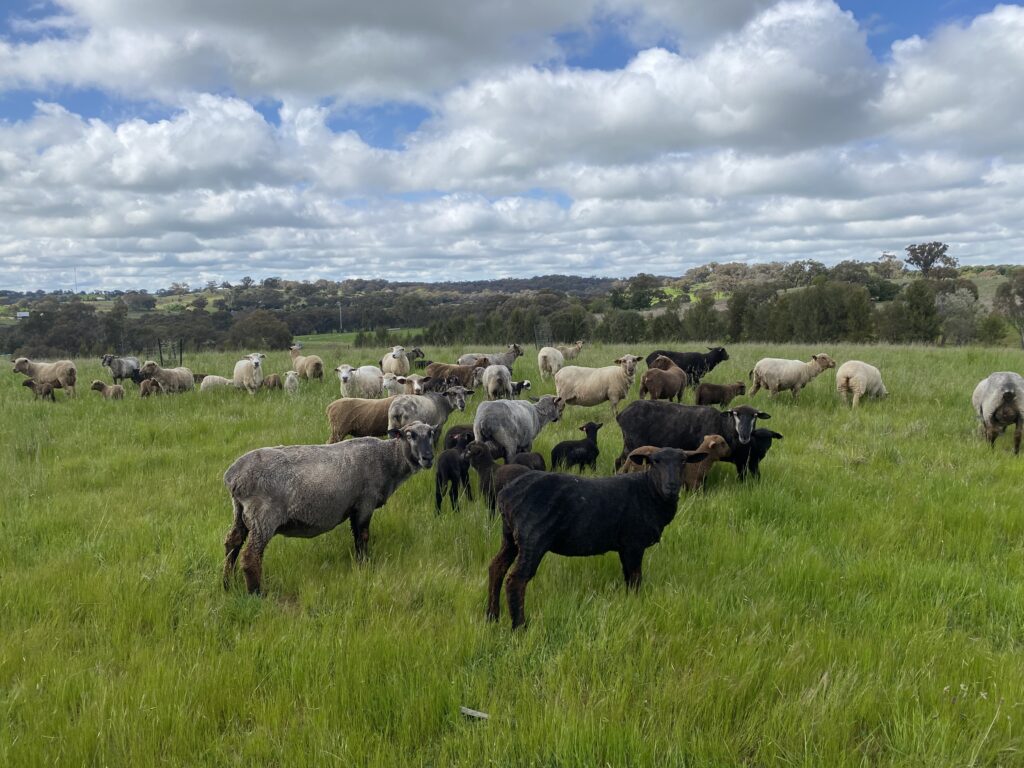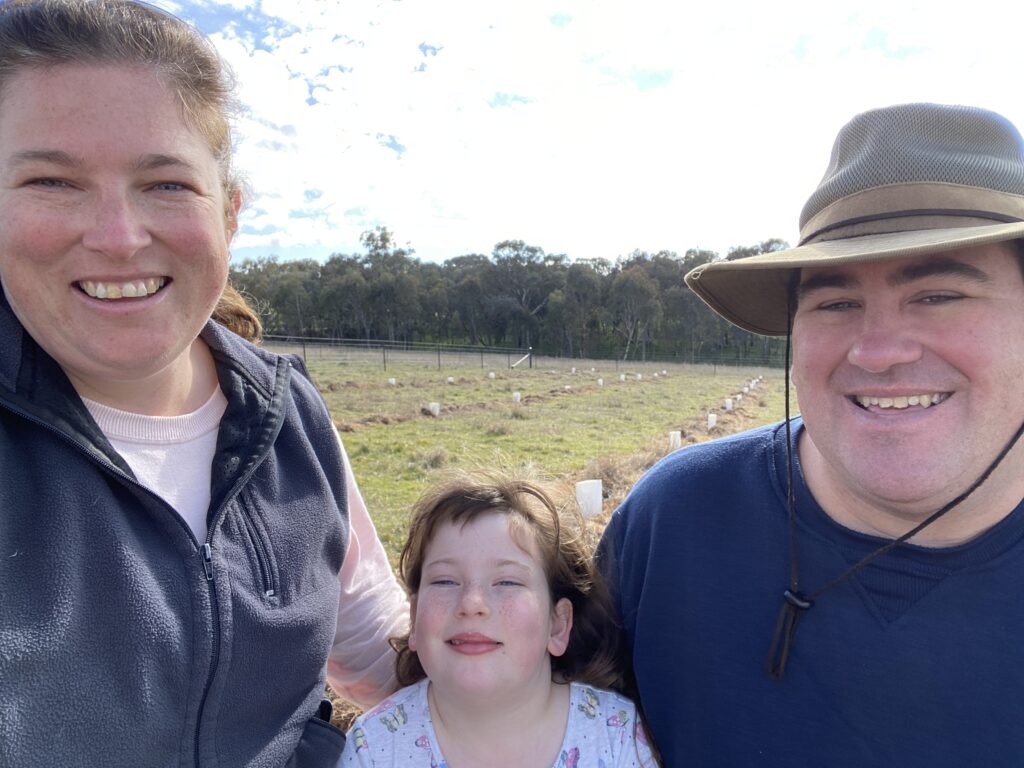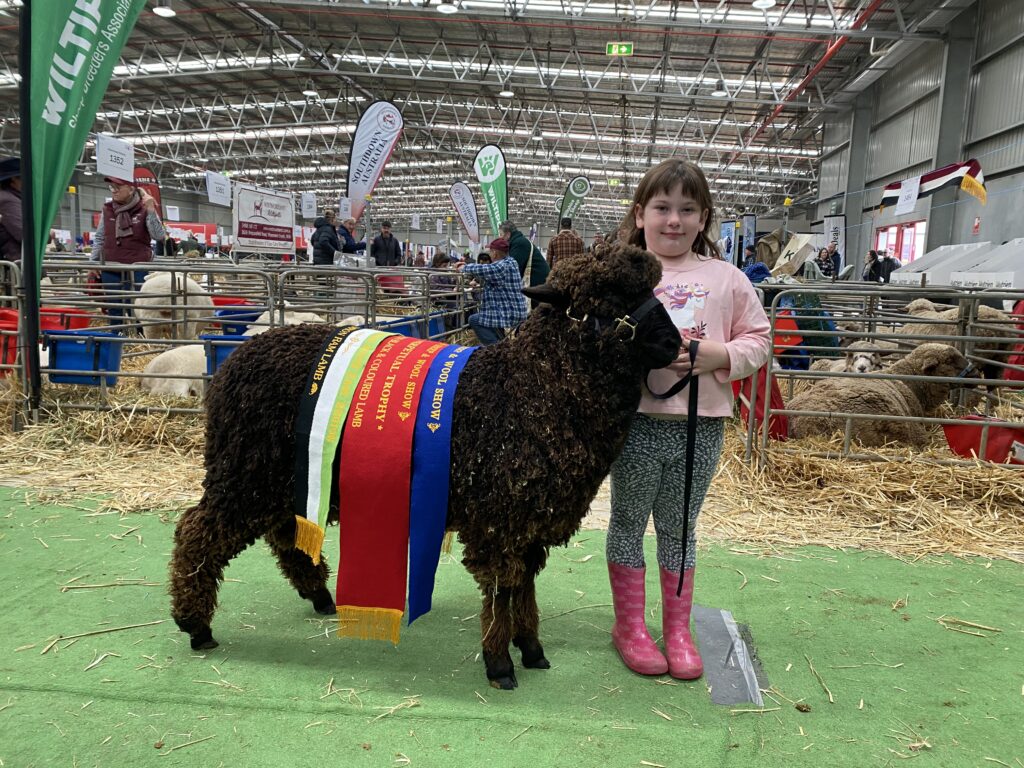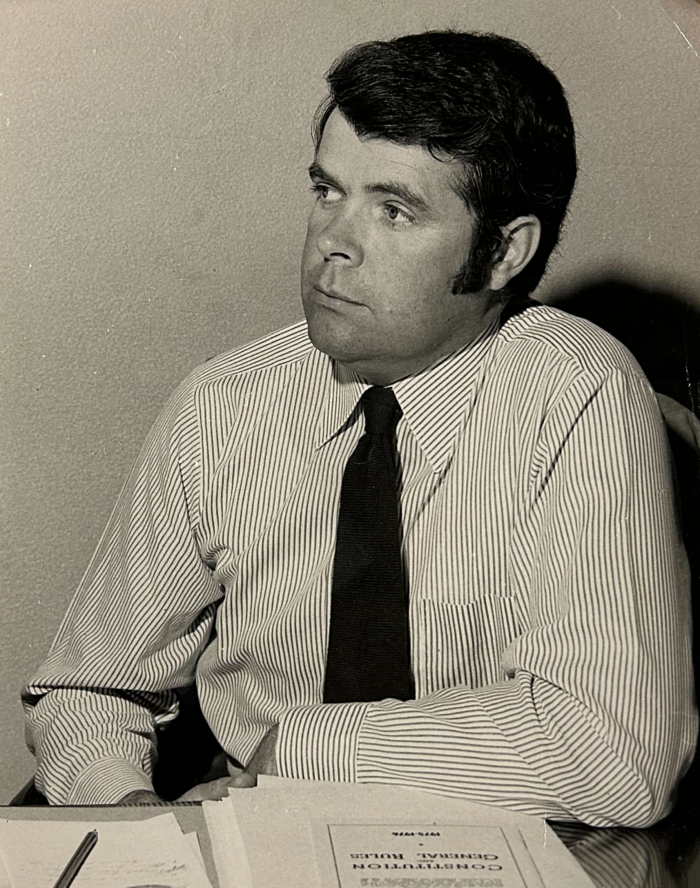Stick a black sheep in a normal shearing shed and you’re likely to be met with looks of horror. Traditionally black wool is thought of as a contaminant in a world where pristine white fleece is the commercial norm. But Melissa Henry has embraced coloured sheep and found a niche in an alternate world of spinners and felters.
In the rolling hills near Young, NSW, spring has sprung and greens shoots appear in winter-bitten paddocks. Lambs frolic. But not white lambs. These are lambs of autumnal tones, of russets and coffees, umbers and ambers, gradating to mottled greys and jet-blacks. These are the Corriedales of Quebon Coloured Sheep.

Melissa, by day a natural resource management officer with South East Local Land Services (LLS), was first captivated by coloured sheep at Richmond High School in Sydney’s west. In fact, so captivated was she that she purchased her favourites as founders of her fledgling stud. For 12 years the sheep lived on agisted properties until Melissa moved to Boorowa to take up her LLS position and then purchased, with husband Simon Maher, 25 acres at Young.
Buying Baabra’s Hill
“When we bought Baabra’s Hill it had nothing more than a boundary fence so it was a blank canvas,” Melissa said. “We’ve built a house and have implemented our own property plan and it’s nice to finally have the same address as the sheep.”

Drawing on her professional experience, which links her to local farmers and wool producers, Melissa operates in a regime she calls regenerative rotational grazing with a focus on keeping inputs low. “Managing costs is really important because we don’t want to be in debt because of the sheep,” Melissa says. “Quebon has to break even or make a small profit. It’s got to be more than just a hobby that gets heaps of money poured into it.”
Chasing colours
Twenty Corriedale ewes, with a lambing percentage between 175% and 200%, run alongside five rams. “Having that many rams is ridiculous, but we’re doing it for genetic diversity and we’re chasing different colours.”
I get excited about coloured sheep because you’re playing with the genetics of colour but also colour patterns.
Melissa is president of the NSW Black and Coloured Sheep Breeders Association and actively promotes her multi-hued wool, most recently winning Champion Coloured Ram Lamb at the national sheep and wool show at Bendigo.
“In earlier years at Bendigo we were in a little shed down the back but now we’re in the big shed with all the other sheep,” she said of the acceptance that is gradually growing for coloured wool.

Melissa sells sheep across NSW and into Western Australia, Queensland and Victoria and fleeces, selling for up to $25/kg, go to hand-spinners and felters across the country. Quebon is gaining a reputation for quality and colour and fostering a community of hand-spinners and felters who cherish the unique qualities of her flock.
Telling a story
Each skein of yarn tells a story, showcasing the unique characteristics of coloured wool and the artisanal craftsmanship of those who create woollen garments. Feedback is effusive. “I am over the moon. The 8.5kg of fleece arrived today and it is beautiful; long staples, rich colour,” says one purchaser. “Absolutely glorious, wonderful fleece,” says another.
For Melissa, running a small-scale operation means she finds independence in handling the animal husbandry and transport herself and she employs principles learnt through her career in natural resource management. “I like to practice what I preach and I think my sheep work well with my LLS career. It doesn’t matter if you have 10 or 1000 sheep, the same management applies and I find the challenge incredibly rewarding.”

For others inspired to embrace their own niche in a commercial world Melissa has valuable advice. “Know what your end-product looks like and work backwards, spend time on your marketing and understand that land stewardship underpins it all. Looking after our soil and vegetation impacts the welfare of all animals, whether they be livestock or wildlife.”
With dedication and passion Melissa is proving that being the black sheep can reveal your true colours.






